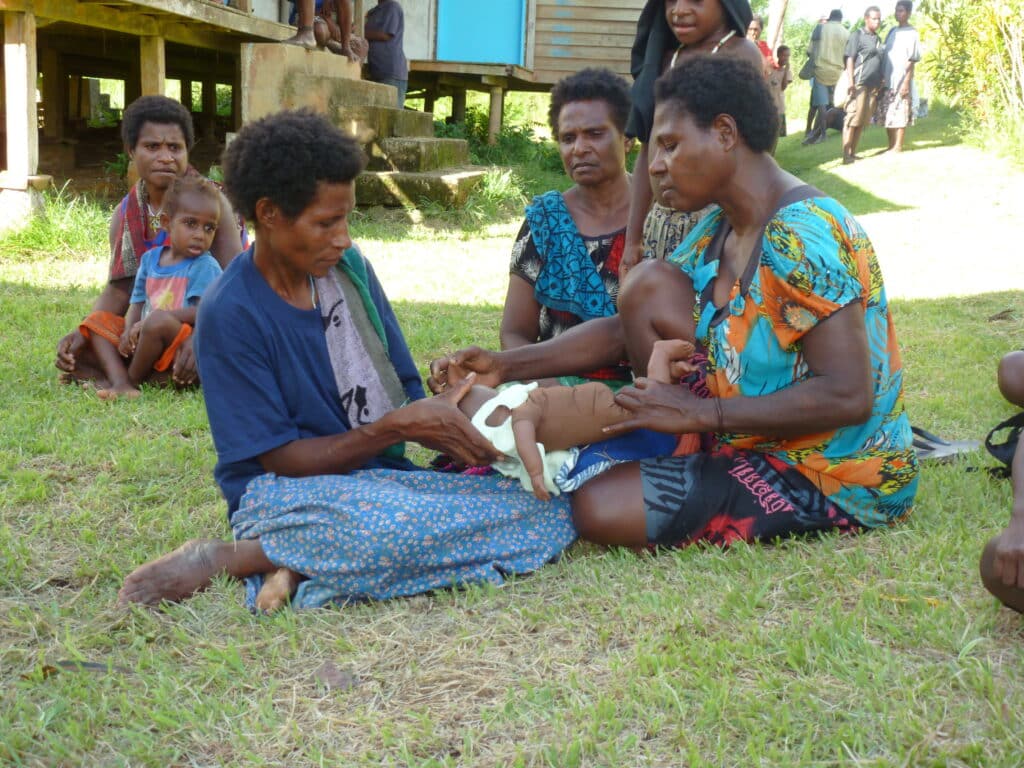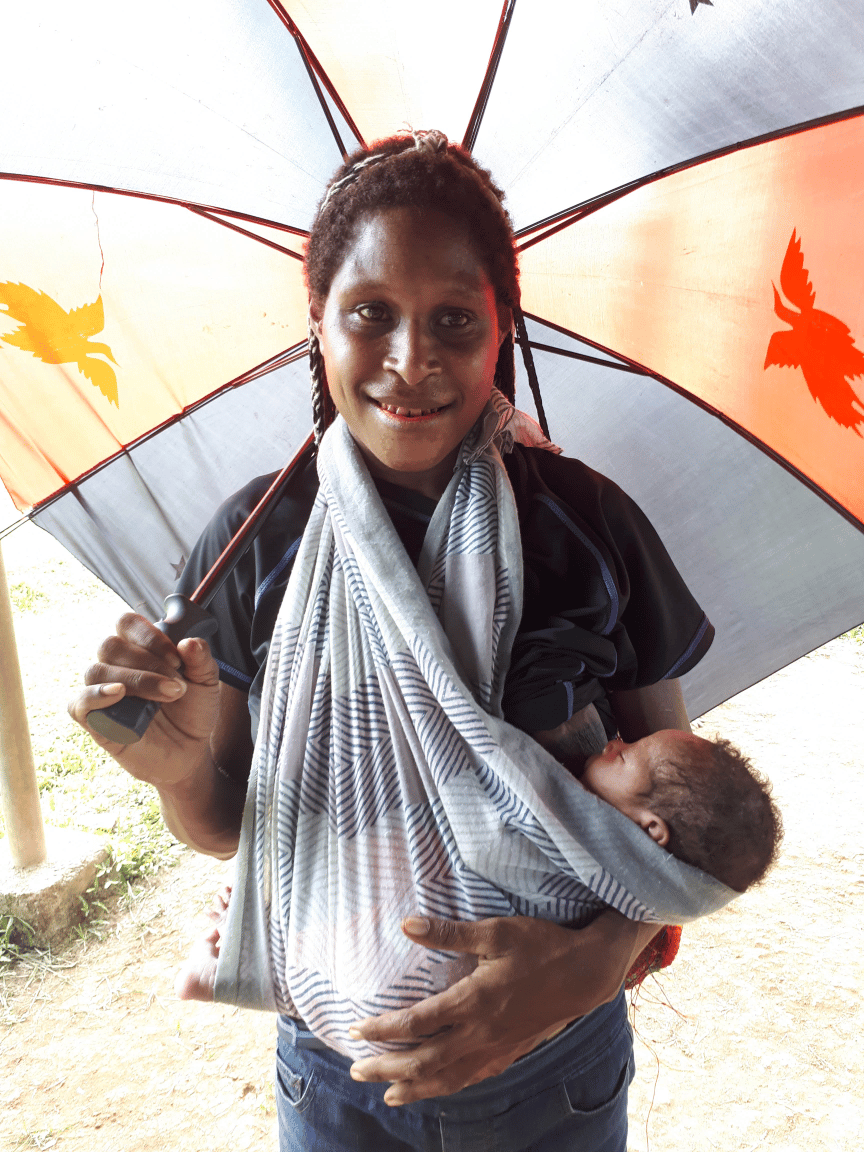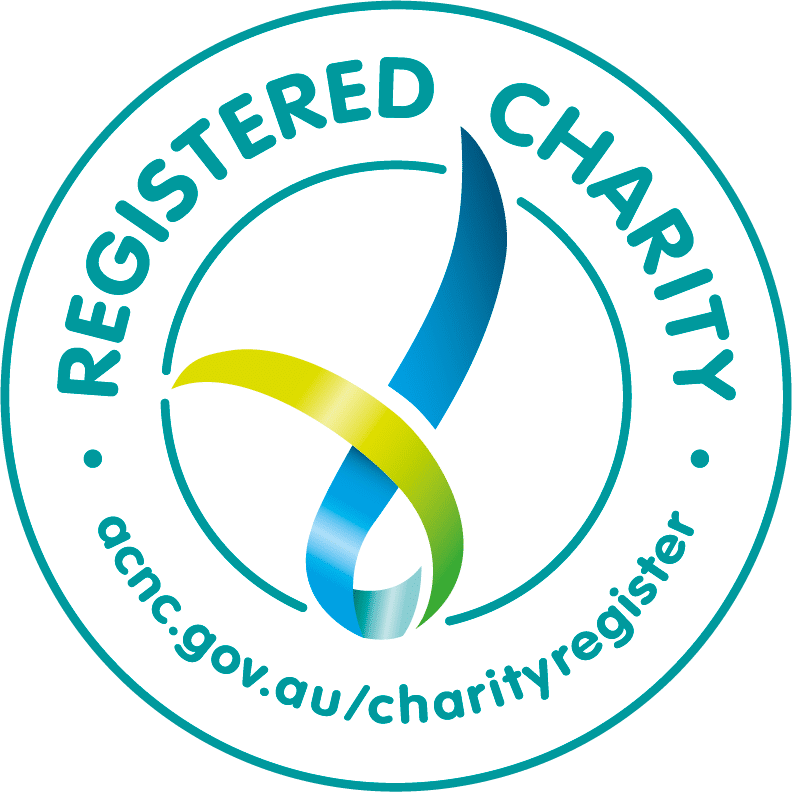Recipient Summary
Project: Village Birthing Huts and Training Project
View an update we received by Living Child in April 2023 on their project here.
Who is Living Child?
Living Child is a midwifery-led not-for-profit that partners with East Sepik Provincial Health Authority (ESPHA) to provide maternal, newborn, child, reproductive, sexual and adolescent health education, training and resources to improve the health of women and girls in remote areas of Papua New Guinea (PNG). Living Child’s vision is for women to be able to choose when and how many children they have, to be able to give birth safely and for their children to have every opportunity to thrive. Living Child works to strengthen community-led development through woman-to-woman peer groups and local activities that educate men to empower women and girls. All projects are initiated and led by local people.

What project will a 100 Women grant support?
The Village Birthing Huts and Training Project will provide quality services to pregnant women by working with local communities to build and fit out five locally appropriate and sustainable birthing huts and to provide essential, appropriate, in-language training to VBAs, and advanced training to exceptional VBA leaders. The focus of VBA training is to improve knowledge and skills so that they can educate women and girls about family planning, care during pregnancy, labour and birth, care of the newborn, establishing breastfeeding, recovery from the birth and adjusting to motherhood.
Why is the project needed?
There are few health services reaching remote village people where 85% of the PNG population lives, even less now due to the impacts of the COVID pandemic. Maternal and neonatal mortality rates are high, especially in East Sepik Province. The training of VBAs has made a positive difference to health outcomes for the communities and the project is needed to consolidate and continue those outcomes as well as extended the skills of VBAs with leadership potential to ensure more capability in emergency situations and to train the future workforce.
What are the planned outcomes?
• Five birthing huts will be constructed in five different villages in the Keram area with essential equipment: solar lighting, rainwater tank, cleaning equipment, PPE and a supply of clean birth kits.
• 50 VBAs will have quality training using evidence-based, culturally appropriate methods to enable them to save lives of mothers and babies.
• 12 VBA leaders will be trained to continue educating VBAs in basic life-saving skills using training manuals, flipcharts and videos.
• 12,500 girls and women of childbearing age will receive education from VBAs in their villages regarding reproductive and sexual health issues including care in pregnancy and birth.
Links
https://www.livingchildinc.org.au/
https://www.facebook.com/livingchildinc


